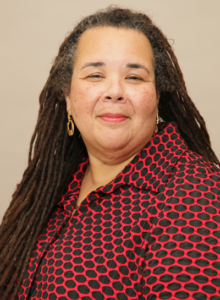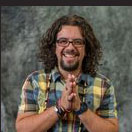social justice
Select an item by clicking its checkbox

Using Action Inquiry in Engaged Research: An Organizing Guide
Date Reviewed: September 13, 2017
In Using Action Inquiry in Engaged Research, Edward P. St. John, Kim Callahan Lijana, and Glenda D. Musoba offer readers a guide for organizing and using information for social justice in education. The authors pair a description of the Action Inquiry Method (AIM) with practices for the reader to use in his or her own context. In addition, the authors employ specific cases to explicate the relation of practitioners, institutions, partners, and researchers. Each case is followed by questions for individual or group reflection. The book includes sections written by researchers and practitioners, which models the varied roles and approaches to AIM as well as the benefits and challenges of collaboration in engaged research for social justice.
Readers are challenged by an integrated understanding of the role of education and policy in social justice. The authors beneficially emphasize the K-16 pathways and the position of underserved populations. The authors remind the reader that the context of the cases and other examples in the text do not necessarily correlate to their own context. This recognition that there is no one right answer to an educational need is underscored by an emphasis on the experimental mode. Readers are encouraged to learn from failure instead of being paralyzed. Moreover, the authors provide ways for practitioners and researchers to challenge systems and practices that prevent justice.
Indeed the tone of the book itself enables and encourages practitioners and researchers as they begin to engage AIM for the first time or collaborate in a new setting. As “an organizing guide,” Using Action Inquiry provides specific questions for the reader to use in assessing a situation and organizing a response. One of the possible weaknesses of this guide is that it does not provide an extensive introduction to AIM; however, the guide’s emphasis on social justice in education would beneficially complement another introduction to AIM.
For scholars of religion and theology, Using Action Inquiry offers a way to question the role of university programs in relation to the pursuit of social justice. The authors outline specific ways in which programs and individuals can potentially assist underserved populations. Additionally, the structure of the guide promotes personal and group reflection. Consequently, university personnel could beneficially engage Using Action Inquiry as they attempt to restructure programs, recruit and retain students, and promote an institution’s mission.
Moreover, the guide can be used in graduate courses to introduce students to AIM. While the text focuses on education research, those interested in other fields can apply this information to their own research context. In particular, the chapter on “Learning from Experience” offers practical suggestions for how to engage institutions and partners and to reflect on one’s role as a researcher. For those introducing theology students to ethnographic methods, Using Action Inquiry would encourage students to reflect on the ethical questions involved in research as they seek to promote social justice.
At a time when higher education is in a state of transition, Using Action Inquiry in Engaged Research encourages practitioners and researchers to collaborate to recognize the needs of underserved populations, organize for change, and promote social justice in education.
Years ago, preparation for the beginning of school was a family affair. The cigar box for storage of pencils, pens, glue, and scissors was gotten by my father from the Pennsylvania State Store. Notebooks, book bags, and new sneakers were on my mother’s to do list. New clothes were ...

Educational Justice: Teaching and Organizing Against the Corporate Juggernaut
Date Reviewed: July 11, 2017
Educational Justice: Teaching and Organizing against the Corporate Juggernaut addresses what the authors call the corporate assault on public education. The book provides detailed stories concentrated in the Chicago and Los Angeles public systems that outline struggles and successes in regard to public schools.
This collaborative book was written by Howard Ryan with Debra Goodman, Joel Jordan, and Joseph Zecola. Ryan describes school reform as corporate: “a package of public policies, private investments, and informal processes through which corporate and private actors are seizing control of education”(23). Ryan names teacher unions that partner with billionaires as part of the corporate juggernaut that places control of education in the hands of those who do not promote the best intentions of public education and leads to privatization of the school system.
Ryan provides an elaborate and involved example of organization and resistance to privatization by Kelvyn Park High School in Chicago. He details the movements by parents, children, and teachers that lead to victory in keeping this one school from being privatized. Joel Jordan describes in detail how teacher unions fought back against the corporate movement and frames a strategic approach to the fight against school reform.
In addition to providing an outline and methods for organizing to fight corporate school reform, the authors demonstrate school transformation through organization.
Debora Goodman focuses on critical literacy, democratic schools, and the whole language movement. Goodman draws upon insights from progressive education, particularly whole language instruction, and progressive educators like John Dewey, Lev Vygotsky, and Paulo Freire to build a theoretical framework. She contrasts theories of literacy and teaching to further develop her thesis.
Ryan provides a transformational organizational method as he describes the practices of Soto Street Elementary School in Los Angeles. He argues against scripted reading programs and supports solidarity among teachers – accomplished through family writing workshops, advocacy for literacy, and the addition of books available to students. Using the same rationale and promotion of transformation of reading, Ryan and Zecola present ideas on a curriculum model using Crenshaw High School in Los Angeles. It is promoted through an extended learning cultural model, extended learning time for teachers, collaborative units of study, and collaborative mapping and history. Additionally, they outline the need for extending learning into the community through internships and learning opportunities for parents.
This book and the work of the authors might be difficult for those in public education outside of larger urban areas to relate to. The book addresses a critical issue facing public education but is limited by only looking at schools in urban settings. The book is valuable because it addresses public schools and social justice in a way that is challenging. The authors raise consciousness about how easy it is to take money from corporate sponsors and then be lured into an educational system dictated by those whose knowledge of how education actually takes place is limited.
In Brazil, there has been a recent uprising of students fighting for justice and better education. Several political developments have spurred the revolt of fourteen- to seventeen-year-old students in defiance of arbitrary laws of governors. Let me mention four events. First, it was discovered that state deputies had stolen money ...
The proximity of violence is the terror. Violence is not new – it is, for much of our society and in many, many ways, a preferred way of life. The illusion is that violence can be controlled, patrolled, contained, and then “utilized” when needed – like a genie in and out of ...

